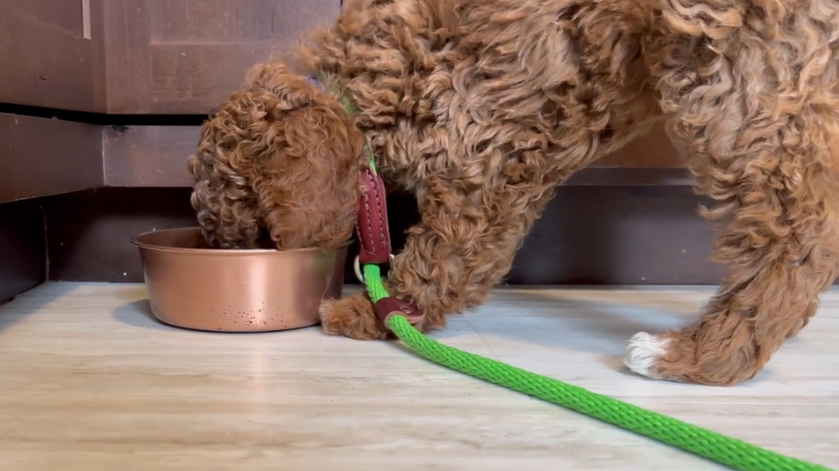The Power of a Feeding Schedule: How Routine Builds Better Puppies
One of the most effective ways to set your puppy up for success—both in training and overall behavior—is establishing a consistent feeding schedule. Not only does this help with potty training, it creates structure and predictability that puppies thrive on.
How Often Should a Puppy Eat?
A common question new owners ask is: “How often should a puppy eat?”
The answer depends on your puppy’s age, but generally, 2–3 meals a day is standard. Feeding at consistent times helps regulate digestion and creates a reliable potty routine.
If you’re wondering how often should a puppy eat during training phases, it’s best to time meals around training sessions to keep your puppy focused and food-motivated.
Avoid free-feeding (leaving food out all day), which can cause pickiness, lack of food motivation, and unpredictable potty patterns.
How to Feed for Training Success
- Use Kibble as Your Training Treat
Skip the expensive treats and use your puppy’s daily kibble as their reward. This makes training a regular part of their routine without overfeeding. - Feed by Hand When Possible
Measure out your puppy’s meal and put it in a treat pouch. Throughout the day, reward calm behavior, eye contact, and command-following with kibble straight from your hand. - Be Intentional, Not Perfect
Can’t do a full training session? That’s okay! Reward a few sits or leash-follows with food. Even simple interactions reinforce your role as the leader and make training part of daily life. - Want to Speed Things Up? Jackpot!
If you’re short on time, use rapid-fire repetitions of commands your puppy already knows and give a handful of kibble (called a “jackpot”) to mark a job well done.

Feeding Schedule = Potty Schedule
Feeding your puppy at consistent times helps regulate their digestion. That means more predictable potty breaks—one of the secrets to successful house training. We have a sample schedule for you here.
Feed your puppy 2–3 times a day at the same times. Then take them outside to potty about 20–30 minutes after eating. Avoid food and water right before bedtime to reduce overnight accidents.
If you’ve been asking, how often should a puppy eat to avoid accidents?—this structure is the key to quicker housebreaking. Get our Crate and Potty Training Challenge to master crate and potty training in just two weeks.
Final Thought: Food is More Than Fuel—It’s a Tool
In the early months, food isn’t just about nutrition. It’s a communication tool. It teaches your puppy to look to you for guidance, rewards calm behavior, and creates bonding through shared routines.
When you stick to a routine and understand how often should a puppy eat based on their age and training phase, your puppy will develop faster focus and obedience.
Want to learn more about integrating food into your training journey? Join us at CornerstonePuppy.com for step-by-step video support and personalized help from our team.
You’ve got this—and we’re here to help every step (and snack) of the way. 🐾
+ show Comments
- Hide Comments
add a comment